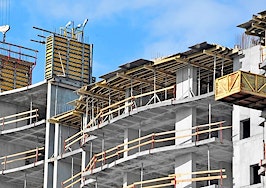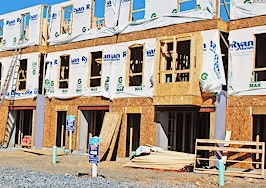- According to a report by RealtyTrac, vacancies are down 9.3 percent from the previous third quarter analysis.
- All of this may be good news for sellers and landlords, but it’s bad news for buyers and renters, said Daren Blomquist, RealtyTrac’s vice president.
- The low levels of open housing may be pushing market and rental prices upward.
U.S. residential property vacancy rates are on the decline, but this trend may not live up to its appearances, as noted in RealtyTrac’s 2016 U.S. Residential Property Vacancy Analysis report for the first quarter.
The report includes foreclosure status, owner-occupancy status and equity data for 85 million U.S. properties, which are compared to monthly vacancy data provided by the U.S. Postal Service. Only metropolitan statistical areas with at least 100,000 properties were included in the rankings.
According to the report, as of the beginning of February, vacancies were down 9.3 percent from the last analysis in the third quarter of 2015. Only 1.3 million properties, or 1.6 percent of all properties, were vacant.
Of those vacant homes, more than 76 percent of were investment properties, but investment property vacancy rates are also down at least 3 percent in more than a third of all markets.
“Zombie” foreclosures fell 4 percent from a year ago, but seem to be increasing in some markets that have a protracted foreclosure process or high numbers of blighted properties.
Who benefits, and who loses out?
All of this may be good news for sellers and landlords, but it’s bad news for buyers and renters, said Daren Blomquist, RealtyTrac’s vice president.
“With several notable exceptions, the challenge facing most U.S. real estate markets is not too many vacant homes, but too few,” Blomquist said. “The razor-thin vacancy rates in many markets are placing upward pressure on home prices and rents.”
Blomquist added that this “could be bad news for all if prices and rents are inflated above tolerable affordability thresholds.” Rent is already unaffordable in many metro areas, where renters are being expected to pay half of their income or more on rent payments.
Cities with the highest share of vacant properties were:
- Flint, Michigan (7.5 percent)
- Detroit (5.3 percent)
- Youngstown, Ohio (4.4 percent)
- Beaumont-Port Arthur, Texas (3.8 percent)
- Atlantic City, New Jersey (3.7 percent).

Other major metro areas with vacancy rates above the national average included:
- Indianapolis (3 percent)
- Tampa, Florida (2.9 percent)
- Miami (2.8 percent)
- Cleveland (2.8 percent)
- St. Louis (2.6 percent).
Regional economists weigh in
“Across the Ohio markets, occupancy demand is fueling a robust seller’s market for residential and commercial real estate,” said Michael Mahon, president at HER Realtors, which covers the Ohio markets of Dayton, Columbus and Cincinnati. “With vacancy rates low, situations such as leasebacks and delayed occupancy are factors of concern in trying to get timing aligned for possession transfer in many communities.
“Couple this demand with the added necessary timing factors of the new federal TRID disclosure process for 2016, and there is an even more heightened need for clear and consistent communication between buyers and sellers involving the timing and expectations of possession transfer regarding real estate transactions.”
Cities with the lowest share of vacant properties were San Jose, California (0.2 percent); Fort Collins, Colorado (0.2 percent) as well as Manchester, New Hampshire; Provo, Utah; Lancaster, Pennsylvania, and San Francisco where only 0.3 percent of properties were vacant.
Other major metro areas with vacancy rates below the national average included Los Angeles, where just 0.4 percent of properties were vacant, and Boston, Denver and Washington, D.C., which each reported a 0.5-percent vacancy share.
Matthew Gardner, chief economist at Windermere Real Estate, which covers the Seattle market, noted that the 0.9-percent vacancy rate in Seattle, as well as an investment property vacancy rate of 2.4 percent, were more than 40 percent below the national average, and offered some insight into that market.
“Due to Seattle’s growing economy, high in-migration and limited housing supply, it’s no surprise that our market has a low number of vacant homes relative to the national average,” Gardner said. “Rents across the board are rising in Seattle, but single-family home rentals in some areas are providing a more affordable option to traditional apartments.”









